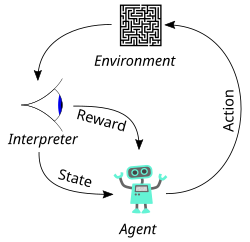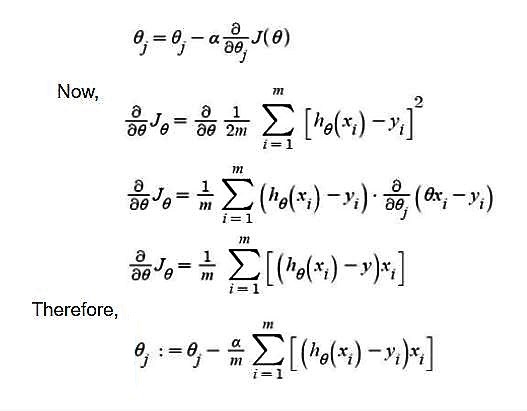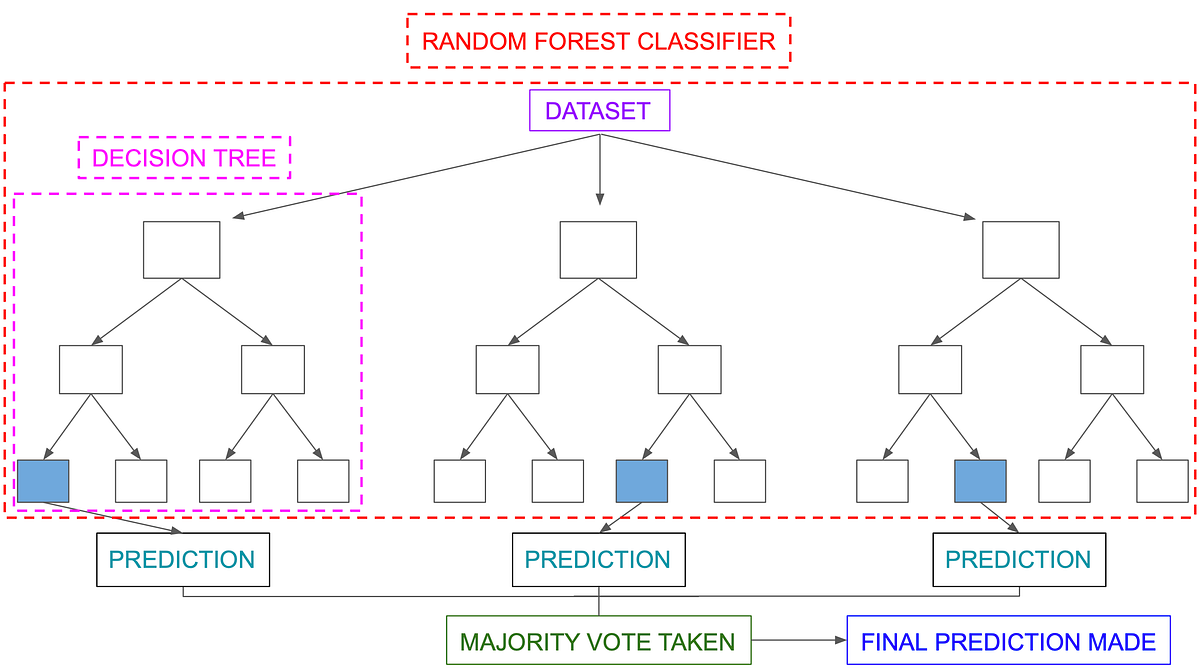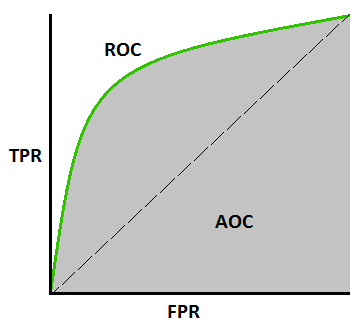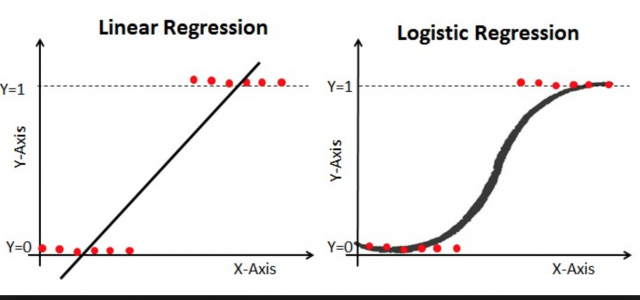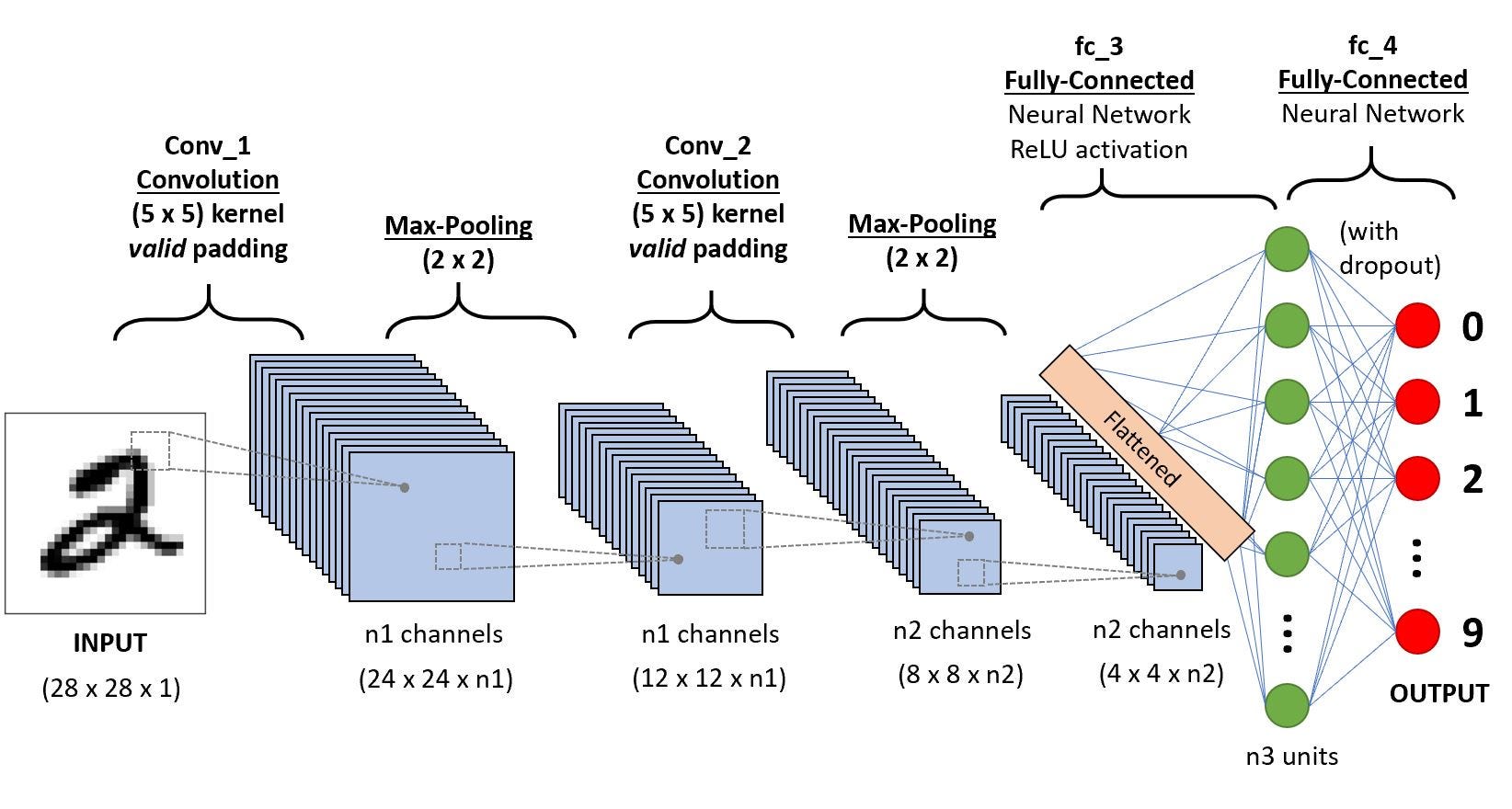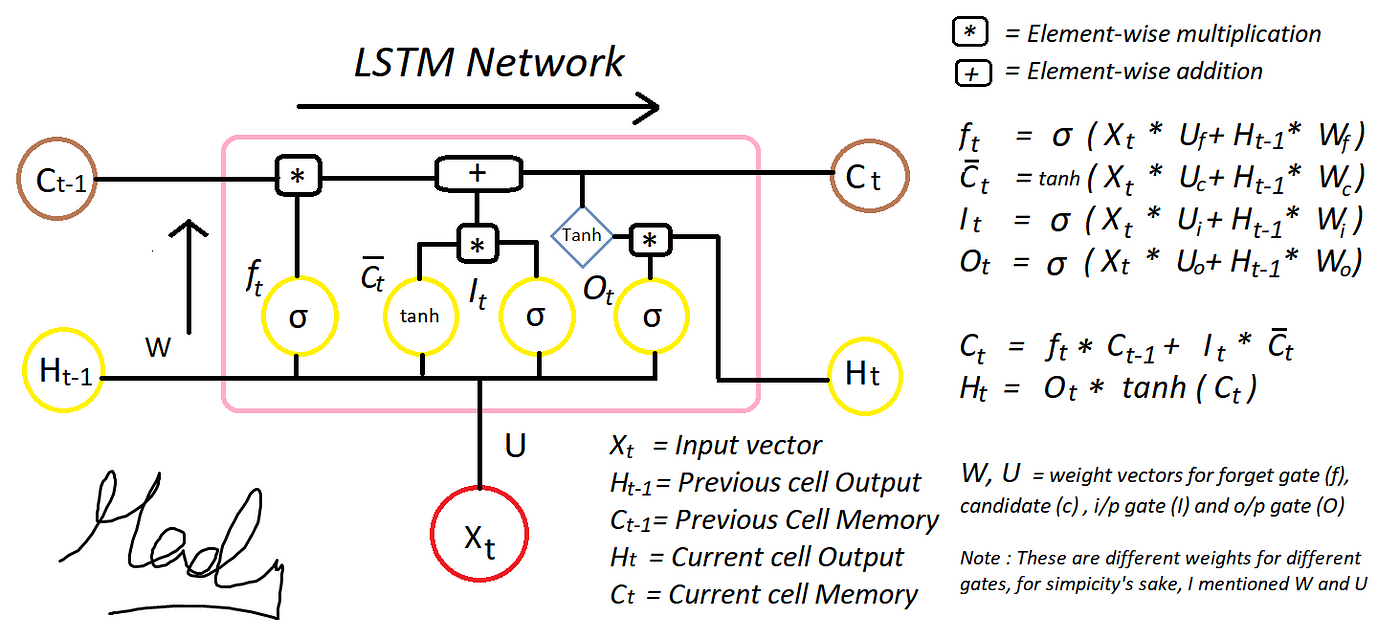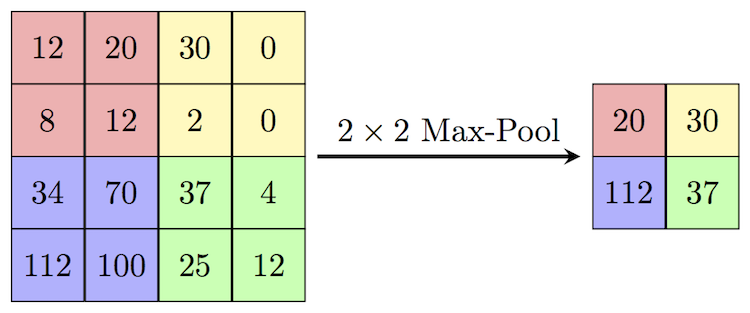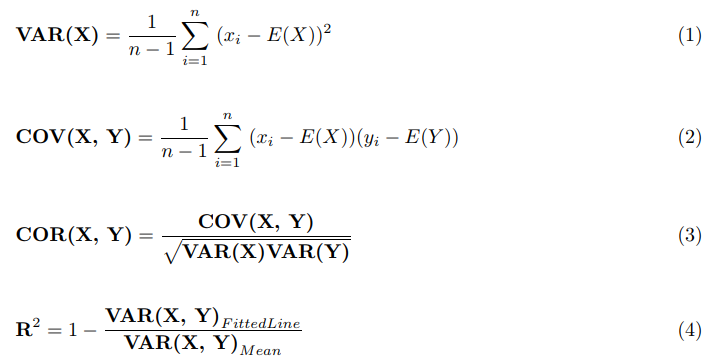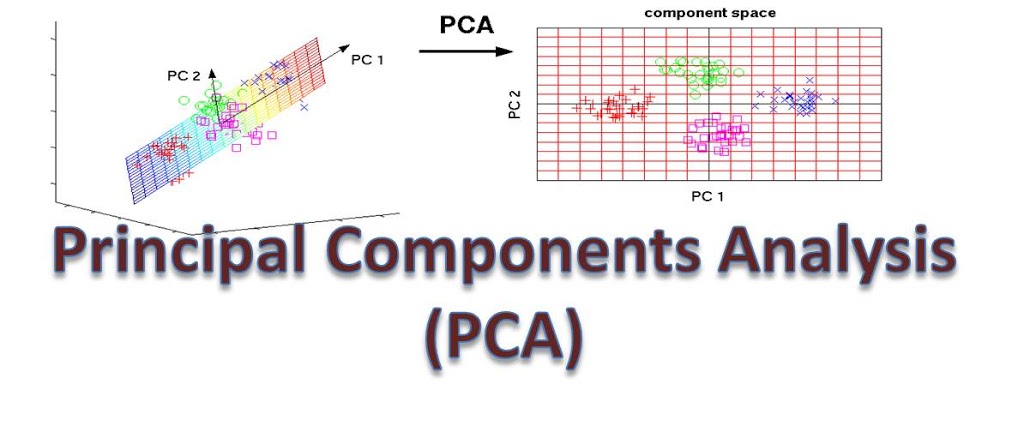These questions are guranteed to be asked in Machine Learning Engineer or ML based interviews for upto 80% of your job interviews. Make sure that you cover and know about machine learning. These questions can Ace your interviews regarding ML even if you are a fresh graduate or upto 5 years of experience.
Helpful for:
-
Machine Learning Engineer
-
Data Scientist
-
Deep Learning Engineer
-
AI Engineer
-
Software Development Engineer (focused on AI/ML)
- Github Profile : Shafaypro ©
- Linkedin Profile : MShafayAmjad
- ML Interview Questions repository : ML interview Repository Link
- The Image references are only for Educational Purposes. These are totally made by the creators, specified in the reference.md file.
Feel Free to Share the Questions/References Link into your blog.
Supervised learning is when you know the outcome and you are provided with the fully labeled outcome data while in unsupervised you are not
provided with labeled outcome data. Fully labeled means that each example in the training dataset is tagged with the answer the algorithm should
come up with on its own. So, a labeled dataset of flower images would tell the model which photos were of roses, daisies and daffodils. When shown
a new image, the model compares it to the training examples to predict the correct label.
A learning differs from supervised learning in not needing labelled input/output pairs be presented, and in not needing sub-optimal actions to be
explicitly corrected. Instead the focus is on finding a balance between exploration (of uncharted territory) and exploitation (of current
knowledge) .Semisupervised learning is also known as Reinforcment learning, in reinforcment learning each learning steps involved a penalty
criteria whether to give model positive points or negative points and based on that penalizing the model.
Deep learning is defined as algorithms inspired by the structure and function of the brain called artificial neural networks(ANN).Deep learning
most probably focuses on Non Linear Analysis and is recommend for Non Linear problems regarding Artificial Intelligence.
Since DL is a subset of ML and both being subset of AI.While basic machine learning models do become progressively better at whatever their
function is, they still need some guidance. If an AI algorithm returns an inaccurate prediction, then an engineer has to step in and make
adjustments. With a deep learning model, an algorithm can determine on its own if a prediction is accurate or not through its own neural network.
Bias is definned as over simpliciation assumption assumed by the model,
Variance is definned as ability of a model to learn from Noise as well, making it highly variant.
There is always a tradeoff between these both, hence its recommended to find a balance between these two and always use cross validation to
determine the best fit.
Fitting a Line in the respectable dataset when drawn to a plane, in a way that it actually defines the correlation between your dependent
variables and your independent variable. Using a simple Line/Slope Formulae. Famously, representing f(X) = M(x) + b.
Where b represents bias
X represent the input variable (independent ones)
f(X) represents Y which is dependent(outcome).
The working of linear regression is Given a data set of n statistical units, a linear regression model assumes that the relationship between the
dependent variable y and the p-vector of regressors x is linear. This relationship is modeled through a disturbance term or error variable ε — an
unobserved random variable that adds "noise" to the linear relationship between the dependent variable and regressors. Thus the model takes the
form Y = B0 + B1X1 + B2X2 + ..... + BNXN
This also emplies : Y(i) = X(i) ^ T + B(i)
Where T : denotes Transpose
X(i) : denotes input at the I'th record in form of vector
B(i) : denotes vector B which is bias vector.
Poisson regression for count data.
Logistic regression and probit regression for binary data.
Multinomial logistic regression and multinomial probit regression for categorical data.
Ordered logit and ordered probit regression for ordinal data.
Logistic regression is a statistical technique used to predict probability of binary response based on one or more independent variables.
It means that, given a certain factors, logistic regression is used to predict an outcome which has two values such as 0 or 1, pass or fail,
yes or no etc
Logistic Regression is used when the dependent variable (target) is categorical.
For example,
To predict whether an email is spam (1) or (0)
Whether the tumor is malignant (1) or not (0)
Whether the transaction is fraud or not (1 or 0)
The prediction is based on probabilties of specified classes
Works the same way as linear regression but uses logit function to scale down the values between 0 and 1 and get the probabilities.
The sigmoid might be useful if you want to transform a real valued variable into something that represents a probability. While the Logit function
is to map probaliticvalues from -Inf to +inf to either real numbers representing True or False towards 1 or 0 (real number). This is commonly used
in Classification having base in Logistic Regression along with Sigmoid based functions in Deep learning used to find a nominal outcome in a
layer or output of a layer.
Support Vector Machine is defineed as a Technique which is classification and regression model. Which uses hyper plan estimation and best hyper plane
fitting the estimate on linear lines drawn same a linear one. Although it can also work for non Linear using kernal tricks on SVM.
SVM is totally based on Marginal lines (with difference between two classes in the best way possible).
One Vs rest is the base classifier concept which is used in all the Ml algorithms which involves classification based on Class A vs Classes REst approach. Since here are only two heuristic approaches which are enhancment of Multiclass classificaton to make the binary classifier perform
well on multi class problems and solve the problem in hand.
The algorithms which uses OVO are:
1) Extreme learning Machines(ELM's)
2) Support Vector Machine(Classifiers)
3) K Nearest Neighbours.(for neighbouring classes based on distances)
4) Naive Bayes (based on MAP : Maximum Posterior )
5) Decision Trees(decision in subnodes after parent node has one feature)
6) Neural Networks (different nets)
Think of kernels as definned filters each for their own specific usecases.
1) Polynomial Kernels (used for image processing)
2) Gaussian Kernel (When there is no prior knowledge for data)
3) Gaussian Radial Basis Function(same as 2)
4) Laplace RBF Kernel ( recommend for higher training set more than million)
5) Hyperbolic Tangent Kernel (neural network based kernel)
6) Sigmoid Kernel(proxy for Neural network)
7) Anova Radial Basis Kernel (for Regression Problems)
There are multiple evaluation metrics for Regression Analysis
1) Mean Squared Error ( the average squared difference between the estimated values and the actual value)
2) Mean Absolute Error (Absolute of the Average difference)
MAE : Use MAE when you are doing regression and don’t want outliers to play a big role. It can also be useful if you know that your distribution is multimodal, and it’s desirable to have predictions at one of the modes, rather than at the mean of them.
MSE : use MSE the other way around, when you want to punish the outliers.
A classifier can be evaluated through multiple case, having the base case around its confusion metrics and its attributes which are TP, TN , FP and FN. Along with the Accuracy metrics which can be derived alongside Precision, Recall scores.
Classification is defined as categorizing classes or entities based on the specified categories either that category exists or not in the respectable data. The concept is quite common for Image based classification or Data Based Classification. The answer in form of Yes or No;
alongside answers in form of types of objects/classes.
A multiclass defines as a classification outcome which can be of multiple classes either A or B or C but not two or more than one.
While in MultiLabel classification, An outcome can be of either one or more than two classes i.e A or A and B or A and B and C.
A confusion matrix, also known as an error matrix, is a specific table layout that allows visualization of
the performance of an algorithm, typically a supervised learning one (in unsupervised learning it is
usually called a matching matrix). Each row of the matrix represents the instances in a predicted class
while each column represents the instances in an actual class (or vice versa).
The name stems from the fact that it makes it easy to see if the system is confusing two classes
(i.e. commonly mislabeling one as another).
Bias is the simplifying assumptions made by the model to make the target function easier to approximate.
1) High bias algorithms are most probably Linear Algorithm, which are concerned with linear relationships or linear distancing. Examples are
2) Linear, Logistic or Linear Discrimenant Analysis.
Variance is the amount that the estimate of the target function will change given different training data
1) High Variance Algorithms are Decision Trees, K Nearest Neigbours and SVMs
2) Low Variance Algorithms are Linear Regression, Logistic Regression and LDA's
Linear machine learning algorithms often have a high bias but a low variance.
Nonlinear machine learning algorithms often have a low bias but a high variance.
Possible root causes of prediction bias are:
1) Incomplete feature set
2) Noisy data set
3) Buggy pipeline
4) Biased training sample
5) Overly strong regularization
Gradient Descent is an iterative method to solve the optimization problem. There is no concept of "epoch" or "batch" in classical gradient decent. The key of gradient decent are
* Update the weights by the gradient direction.
* The gradient is calculated precisely from all the data points.
Stochastic Gradient Descent can be explained as:
* Quick and dirty way to "approximate gradient" from one single data point.
* If we relax on this "one single data point" to "a subset of data", then the concepts of batch and epoch come.
A decision tree is a decision support tool that uses a tree-like model of decisions and their possible consequences, including chance event
outcomes, resource costs, and utility. It is one way to display an algorithm that only contains conditional control statements.
Random forests or random decision forests are an ensemble learning method for classification, regression and other tasks that operate by
constructing a multitude of decision trees at training time and outputting the class that is the mode of the classes (classification) or mean
prediction (regression) of the individual trees. Used to remove the Overfitting occured due to single Decision Trees.
Splitting up your data in to subsets based on provided data facts. (can come in handy for decision Trees)
The Shortening of branches of Decision Trees is termed as Prunning. The process is done in case to reach the decision quite earlier than
expected. Reducing the size of the tree by turning some branch nodes into leaf nodes, and removing the leaf nodes under the original branch.
Tree selection is mainly done from the following
1) Entropy
A decision tree is built top-down from a root node and involves partitioning the data into subsets that contain instances with similar
values (homogeneous). ID 3 algorithm uses entropy to calculate the homogeneity of a sample. If the sample is completely homogeneous the
entropy is zero and if the sample is an equally divided it has entropy of one.
Entropy(x) -> -p log(p) - qlog(q) with log of base 2
2) Information Gain
The information gain is based on the decrease in entropy after a dataset is split on an attribute. Constructing a decision tree is all about finding attribute that returns the highest information gain (i.e., the most homogeneous branches).
2.1) Calculate entropy of the target.
2.2) The dataset is then split on the different attributes. The entropy for each branch is calculated. Then it is added proportionally, to get total entropy for the split. The resulting entropy is subtracted from the entropy before the split. The result is the Information Gain, or decrease in entropy.
2.3) Choose attribute with the largest information gain as the decision node, divide the dataset by its branches and repeat the same process on every branch.
'''
from math import log
def calculateEntropy(dataSet):
number = len(dataSet)
labelCounts = {}
for featureVector in dataSet:
currentLabel = featureVector[-1]
if currentLabel not in labelCounts.keys():
labelCounts[currentLabel] = 0
labelCounts[currentLabel] +=1
entropy = 0
for i in labelCounts:
probability = float(labelCounts[keys])/number
entropy -=probability*log(probability,2)
return entropy
'''
-* Decision Tree *- A Simple Tree compromising of the process defined in selection of Trees.
-* RandomForest *- Combination of Multiple N number of Decision Trees and using the aggregation to determine the final outcome.
The classifier outcome is based on Voting of each tree within random forest while in case of regression it is based on the
averaging of the tree outcome.
The Gini Index is calculated by subtracting the sum of the squared probabilities of each class from one. It favors larger partitions.
Imagine, you want to draw a decision tree and wants to decide which feature/column you should use for your first split?, this is probably defined
by your gini index.
Gini Index:
for each branch in split:
Calculate percent branch represents .Used for weighting
for each class in branch:
Calculate probability of class in the given branch.
Square the class probability.
Sum the squared class probabilities.
Subtract the sum from 1. #This is the Ginin Index for branch
Weight each branch based on the baseline probability.
Sum the weighted gini index for each split.
Favors larger partitions.
Uses squared proportion of classes.
Perfectly classified, Gini Index would be zero.
Evenly distributed would be 1 – (1/# Classes).
You want a variable split that has a low Gini Index.
The algorithm works as 1 – ( P(class1)^2 + P(class2)^2 + … + P(classN)^2)
Probability defines the percentage of Succes occured. or Success of an event. Can be described Chance of having an event is 70% or etc.
We suppose that the event that we get the face of coin in success, so the probability of success now is 0.5 because the probability of face and back of a coin is equal. 0.5 is the probability of a success.
Likelihood is the conditional probability. The same example, we toss the coin 10 times ,and we suppose that we get 7 success ( show the face) and
3 failed ( show the back). The likelihood is calculated (for binomial distribution, it can be vary depend on the distributions).
Likelihood(Event(success)) - > L(0.5|7)= 10C7 * 0.5^7 * (1-0.5)^3 = 0.1171
L(0.5 | 7) : means event likelihood of back( given number of successes)
10C7 -> Combination based on total 10 Events, and having the success outcome be 7 events
In general:
Event(X | Y) -> C(Total Event| Success Event) * [(Prob of X) ^ (Success Event X)] * [(1 - Prob of X) ^ (1 - Success Event X)]
Entropy: Randomness of information being processed.
Information Gain multiplies the probability of the class times the log (base=2) of that class probability. Information Gain favors smaller partitions with many distinct values. Ultimately, you have to experiment with your data and the splitting criterion.
IG depends on Entropy Change (decrease represent increase in IG)
Kullback-Leibler divergence calculates a score that measures the divergence of one probability distribution from another
Entropy: Randomness of information being processed.
Cross Entropy: A measure from the field of information theory, building upon entropy and generally calculating the difference between two
probability distributions. It is closely related to but is different from KL divergence that calculates the relative entropy between two
probability distributions, whereas cross-entropy can be thought to calculate the total entropy between the distributions.
Cross-entropy can be calculated using the probabilities of the events from P and Q, as follows:
H(P, Q) = – sum x in X P(x) * log(Q(x))
ROC is a probability curve and AUC represents degree or measure of separability. AUC - ROC curve is a performance measurement for classification problem at various thresholds settings.
It tells how much model is capable of distinguishing between classes. Mainly used in classification problems for measure at different thresholds.
Higher the AUC, better the model is at predicting 0s as 0s and 1s as 1s. By analogy, Higher the AUC, better the model is at distinguishing between patients with disease and no disease.
False positive : A false positive is an outcome where the model incorrectly predicts the positive class.(was A but got predicted B) aka Type I error.
False Negative : A false negative is an outcome where the model incorrectly predicts the negative class. (was not A but predicted A) aka Type II error.
Take a simple Classification example of "Classifying email messages as spam or not spam"
Precision measures the percentage of emails flagged as spam that were correctly classified—that is, the percentage of dots to the right of the threshold line, it is also defined as % of event being Called at positive rates e.g
Precision = True Positive / (True Positive + False positive)
Recall measures the percentage of actual spam emails that were correctly classified
Recall = True Postives / (True Positive + False Negative)
There is always a tradeoff between precision and Recall same is the case of Bias and Variance.
This totally depends on Business Usecase or SME usecase. In case of Fraud Detection Business domains such as banks, online ecommerce websites
recommends of better recall score than precision. While in other cases such as word suggestions or Multi label Categorization it can be precision.
In general, totally dependent on your use case.
The F1 score is the harmonic mean of the precision and recall, where an F1 score reaches its best value at 1 (perfect precision and recall).
Also known as Dice Similarity Coefficent.
David (Scientist Statistician): The widespread use of the F1 score since it gives equal importance to precision and recall. In practice, different types of mis-classifications incur different costs. In other words, the relative importance of precision and recall is an aspect of the problem
The major practical difference between a (kernel) perceptron and SVM is that perceptrons can be trained online (i.e. their weights can be updated
as new examples arrive one at a time) whereas SVMs cannot be. Perceptron is no more than hinge loss (loss function) + stochastic gradient descent (optimization).
SVM has almost the same goal as L2-regularized perceptron.
SVM can be seen as hinge loss + l2 regularization (loss + regularization) + quadratic programming or other fancier optimization algorithms like SMO (optimization).
LogR is Classifier, LR is Regression.
LogR values are between 0 and 1 and probabilty in between as well.
LR values are in realnumbers from 1 to postive N (where N is known)
An outlier is an observation that lies an abnormal distance from other values in a random sample from a population.
Outliers can be removed by following:
1) Use Inter Quantile Range (IQR * 1.5)
2) Use Z-score Scale removal (so that any point much away from mean gets removed)
3) Combination of Z Score and IQR (custom scores)
Regularizations are techniques used to reduce the error by fitting a function appropriately on the given training set and avoid overfitting.
Add Lambda * Biasness value at the end.
1) L1 Regulization (Lasso Regression)
(Least Absolute Shrinkage and Selection Operator) adds “absolute value of magnitude” of coefficient as penalty term to the loss function.
2) L2 Regulization (Ridge Regression)
(adds “squared magnitude” of coefficient as penalty term to the loss function. Here the highlighted part represents L2 regularization element.)
The key difference between these techniques is that Lasso shrinks the less important feature’s coefficient to zero thus, removing some feature
altogether. So, this works well for feature selection in case we have a huge number of features.
Data Sampling statistical analysis technique used to select, manipulate and analyze a representative subset of data points to identify patterns and trends in the larger data set being examined.
There are different techniques of sampling your data
1) Simple Random Sampling (records are picked at random)
2) Stratified Sampling (subsets based on common factor with equal ratio distribution)
3) Cluster Sampling (largest set is breaken down in form of clusters based on defined factors and SRS is applied)
4) MultiStage Sampling (cluster on Cluster sampling)
5) Symentaic Sampling (Sample created by setting interval)
Undersampling is the concept of downsizing the class based sample from a Bigger range to smaller range i.e 1Million records to 0.1 Million records,
keeping the ratio of information intact
Oversampling represents the concept of using a smaller class sample i.e 100K to scale upto million keeping the trend and the property to make up
datasets.
Imbalancment is when you don't have balance in between classes.
Imabalnced class is when the normal distribution/support count of multiple classes or classes being considered are not the same or almost same.
E.G:
Class A has 1 Million Record
Class B has 1000 Record
This is imbalanced data set and Class B is UnderBalanced Class.
The techniques such as
1) OverSampling
2) UnderSampling
3) Smote combination of both
4) bringing in more dataset
5) doing more trend analysis
can resolve the issue of Imbalancment dataset
A incremental increase of Moving Average having a Weighted Multiple to keep the values which gets repeated during a certain time with High
priority/ Impact.
A Regressive and Moving Average Model combination is termed as ARIMA. To be exact, Auto Regressive Intergerated Moving Avearges.
A techniques which does regression analysis along with moving averages which fits time series analysis and gets trend analysis with
acceptable scores.
Bagging : A way to decrease the variance in the prediction by generating additional data for training from dataset using combinations with repetitions to produce multi-sets of the original data.
Example : Random Forest (uses random Sampling subsets)
Boosting: An iterative technique which adjusts the weight of an observation based on the last classification
Example: AdaBoost, XGboost (using gradient descent as main method)
IQR is interquantile range which specifies the range between your third quantile and the first one.
Quantile are 4 points of your data represented by percentage(should be four equal parts )
Q1: 0-25%
Q2: 25-50%
Q3: 50-75%
Q4: 75- 100%
IQR :- Q3 - Q1
Synthetic Minority Over-sampling TEchnique also known as SMOTE.
A very popular oversampling method that was proposed to improve random oversampling but
its behavior on high-dimensional data has not been thoroughly investigated.
KNN algorithm gets benefits from SMOTE.
Underfitting
1) Increase complexity of model
2) Increasing training time
3) decrease learning rate
Overfitting:
1) Cross Validation
2) Early Stops
3) increased learning rates(hops)
4) Ensembling
5) Bring in More data
6) Remove Features
1) Cross Validation
2) Early Stops
3) increased learning rates(hops)
4) Ensembling
5) Bring in More data
6) Remove Features
A "neuron" in an artificial neural network is a mathematical approximation of a biological neuron.
It takes a vector of inputs, performs a transformation on them, and outputs a single scalar value.
It can be thought of as a filter. Typically we use nonlinear filters in neural networks.
What are Hidden Layers and Input layer?
1) Input Layer: Initial input for your neural network
2) Hiddent layers: a hidden layer is located between the input and output of the algorithm,
in which the function applies weights to the inputs and directs them through an activation function as the output.
In short, the hidden layers perform nonlinear transformations of the inputs entered into the network.
Hidden layers vary depending on the function of the neural network, and similarly, the layers may vary depending
on their associated weights.
Output layer in ANN determines the final layer which is responsible for the final outcome, the outcome totally depends
on the usecase provided and the function which is being used to scale the values. By default, Linear, Sigmoid and Relu are
most common choices.
Linear for Regression.
Sigmoid/Softmax for Classification.
Activation functions perform a transformation on the input received, in order to keep values within a manageable range depending
on the limitation of the activation function. Its more of a mathematical scale filter applied to a complete layer (Vector)
to scale out values.
Some common examples for AF are:
1) Sigmoid or SoftMax Function (has Vanish Gradient problem)
Softmax outputs produce a vector that is non-negative and sums to 1. It's useful when you have mutually exclusive categories
("these images only contain cats or dogs, not both"). You can use softmax if you have 2,3,4,5,... mutually exclusive labels.
2) Tanh function (has Vanish Garident problem)
if the outputs are somehow constrained to lie in [−1,1], tanh could make sense.
3) Relu Function
ReLU units or similar variants can be helpful when the output is bounded above or below.
If the output is only restricted to be non-negative, it would make sense to use a ReLU
activation as the output function. (0 to Max(x))
4) Leaky Relu Function (to fix the dying relu problem in the Relu function within hidden layers)
convolutional-neural-network is a subclass of neural-networks which have at least one convolution layer.
They are great for capturing local information (e.g. neighbor pixels in an image or surrounding words in a text)
as well as reducing the complexity of the model (faster training, needs fewer samples, reduces the chance of overfitting).
. A convolution unit receives its input from multiple units from the previous layer which together create a proximity.
Therefore, the input units (that form a small neighborhood) share their weights.
A class of artificial neural networks where connections between nodes form a directed graph along a temporal sequence.
This allows it to exhibit temporal dynamic behavior. Derived from feedforward neural networks, RNNs can use their
internal state (memory) to process variable length sequences of inputs. This makes them applicable to tasks such
as unsegmented, connected handwriting recognition or speech recognition.
Long short-term memory (LSTM) is an artificial recurrent neural network (RNN) architecture.
Unlike standard feedforward neural networks, LSTM has feedback connections. It can not only process single
data points (such as images), but also entire sequences of data (such as speech or video).
For example, LSTM is applicable to tasks such as unsegmented, connected handwriting recognition, Anomly detection in network
traffic or IDS.
A convolution is the simple application of a filter to an input that results in an activation. Repeated application of the
same filter to an input results in a map of activations called a feature map, indicating the locations and strength of a
detected feature in an input, such as an image.
You can use Filters which are based on Horizental Lines or Verticial Lines or Gray Scale conversion or other conversion filters.
Pooling layers provide an approach to down sampling feature maps by summarizing the presence of features in patches of the feature map.
Two common pooling methods are average pooling and max pooling that summarize the average presence of a feature and the most activated
presence of a feature respectively.
This is required to downsize your feature scale (e.g You have detected vertical lines, now remove some of the feature to go in grain)
Max polling uses the Maximum value found in a considered size metrics. Maximum pooling, or max pooling, is a pooling operation that calculates the maximum, or largest, value in each patch of each feature map.in a way.
kernel methods are a class of algorithms for pattern analysis, whose best known member is the support vector machine (SVM)
Kernel functions have been introduced for sequence data, graphs, text, images, as well as vectors.
A Kernel is used to solve Non- Linear problem by Linear Classifiers in a way that its useable.
The process of partitioning a digital source into multiple segments.
If you refer Image, Imagine Image source being converted into multiple segments such as Airplane object.
The goal of segmentation is to simplify and/or change the representation of an image into something that
is more meaningful and easier to analyze.
Detection of poster from an Image is represented as Post Estimation.
The input data is fed in the forward direction through the network. Each hidden layer accepts the input data,
processes it as per the activation function and passes to the successive layer.
Back-propagation is the essence of neural net training. It is the practice of fine-tuning the weights
of a neural net based on the error rate (i.e. loss) obtained in the previous epoch (i.e. iteration).
Proper tuning of the weights ensures lower error rates, making the model reliable by increasing its generalization
The term “dropout” refers to dropping out units (both hidden and visible) in a neural network.
Simply put, dropout refers to ignoring units (i.e. neurons) during the training phase of certain
set of neurons which is chosen at random. By “ignoring”, I mean these units are not considered during
a particular forward or backward pass.
More technically, At each training stage, individual nodes are either dropped out of the net with
probability 1-p or kept with probability p, so that a reduced network is left; incoming and
outgoing edges to a dropped-out node are also removed.
A flatten layer collapses the spatial dimensions of the input into the channel dimension.
For example, if the input to the layer is an H-by-W-by-C-by-N-by-S array (sequences of images),
then the flattened output is an (H*W*C)-by-N-by-S array.
practice of fine-tuning the weights of a neural net based on the error rate (i.e. loss)
obtained in the previous epoch (i.e. iteration). Proper tuning of the weights ensures lower error rates,
making the model reliable by increasing its generalization
“Covariance” indicates the direction of the linear relationship between variables.
“Correlation” on the other hand measures both the strength and direction of the linear relationship between two variables.
When comparing data samples from different populations, covariance is used to determine how much two random variables
vary together, whereas correlation is used to determine when a change in one variable can result in a change in another.
Both covariance and correlation measure linear relationships between variables.
Analysis of variance (ANOVA) is a collection of statistical models and their associated estimation procedures
(such as the "variation" among and between groups) used to analyze the differences among group means in a sample.
Use a one-way ANOVA when you have collected data about one categorical independent variable and
one quantitative dependent variable. The independent variable should have at least three levels
(i.e. at least three different groups or categories)
Dimensionality reduction or dimension reduction is the process of reducing the number of random variables
under consideration by obtaining a set of principal variables. Approaches can be divided into feature
selection and feature extraction.
The reason we use it is because
1) Immensive dataset
2) Longer Trainnig time/gathering time
3) Too much complex assumptions/ Model overfitting
Types of Dimentionality reductions are
1) Feature Selection
2) Feature Projection( transform data from higher dimention to lower space of fewer dimention)
3) Principle component Analysis
Linear Technique for DR, performs linear mapping of data to lower dimention
space in such a way variance is maximized.
4) Non Negative Metrics Factorization
5) Kernel PCA ( Non linear way of utilization of Kernel Trick)
6) Graph Based Kernel PCA ( locally linear embedding, Eigen Embeddings)
7) Linear Discrimenant Analysis
A method used in statistics, pattern recognition and machine learning to find a
linear combination of features that characterizes or separates two or more
classes of objects or events.
8) Generalized Discrimenant Analysis
8) TSNE (is a non-linear dimensionality reduction technique useful for visualization of high-dimensional datasets.)
9) U-Map
Uniform manifold approximation and projection (UMAP) is a nonlinear dimensionality reduction technique.
Visually, it is similar to t-SNE, but it assumes that the data is uniformly distributed on a locally
connected Riemannian manifold and that the Riemannian metric
is locally constant or approximately locally constant.
10) Autoencoders (can learn from Non Linear dimention reduction function)
The main linear technique for dimensionality reduction, principal component analysis, performs
a linear mapping of the data to a lower-dimensional space in such a way that the variance of
the data in the low-dimensional representation is maximized. In practice, the covariance (and
sometimes the correlation) matrix of the data is constructed and the eigenvectors on this
matrix are computed. The eigenvectors that correspond to the largest eigenvalues (the
principal components) can now be used to reconstruct a large fraction of the variance of the
original data. The original space (with dimension of the number of points) has been reduced
(with data loss, but hopefully retaining the most important variance) to the space spanned by
a few eigenvectors
Maximum likelihood estimation is a method that determines values for the parameters of a model.
The parameter values are found such that they maximise the likelihood that the process described by the model
produced the data that were actually observed.
A method of estimating the parameters of a probability distribution by maximizing a likelihood function,
so that under the assumed statistical model the observed data is most probable
The probability of an event, based on prior knowledge of conditions that might be related to the event.
Probability is a number between 0 and 1, where, roughly speaking, 0 indicates impossibility and 1 indicates certainty.
The higher the probability of an event, the more likely it is that the event will occur.
Example:
A simple example is the tossing of a fair (unbiased)
coin. Since the coin is fair, the two outcomes ("heads" and "tails") are both equally probable; the probability of "heads" equals the probability
of "tails"; and since no other outcomes are possible, the probability of either "heads" or "tails" is 1/2 (which could also be written as 0.5 or
50%).
Joint probability is a statistical measure that calculates the likelihood of two events occurring together and at the same point in time.
P(A and B) or P (A ^ B) or P(A & B)
The joint probability is detremeinded as :
P(A and B) = P(A given B) * P(B)
Probability of event X=A given variable Y. Single Random event probability
P(A) , A single probability of an independent event.
Probability of event A given event B is termed as Conditional Probability.
Z score (also called the standard score) represents the number of standard deviations with which the
value of an observation point or data differ than the mean value of what is observed
KNN is dependent on distancing estimation from the points of a Class to respectable points in class, thus acting as a Vote Based Neigbouring
Classifier, where you conclude the outcome of your input to be predicted by measuring which points come close to it.
You can have as much as neigbours you want, the more you specify neigbours the more classes it will use to evaluate the final outcome.
Working is quite similar than a distancing algorithm, although you draw the point and calculate all the neigbouring by looking which
are close, when you are done with it you go with as votes, E.g Class A were 5 classes and Class B were 2 classes in that neigbour hood.
Hence the vote would be class A.
Recommended is low FN's, the reason is because if you consider Fraudly Transaction being occured and counting it as not being occured
This has huge impact on the Business model.
KMean: Unsupervised, Random points drawn, each uses distance based averages for prediction.
KNN: Supervised, neigbouring, C values , Voting
A neural attention mechanism equips a neural network with the ability to focus on a subset of its inputs (or features).
1) Hard Attention (Image Cropping)
2) Soft Attention (Highlight attentional area keeping the image size same)
Autoencoders take input data, compress it into a code, then try to recreate the input data from that summarized code. It’s like starting with Moby Dick, creating a SparkNotes version and then trying to rewrite the original story using only SparkNotes for reference. While a neat deep learning trick, there are fewer real-world cases where a simple autocoder is useful. But add a layer of complexity and the possibilities multiply: by using both noisy and clean versions of an image during training, autoencoders can remove noise from visual data like images, video or medical scans to improve picture quality.
Image Captioning is the process of generating textual description of an image. It uses both Natural Language Processing and Computer Vision to
generate the captions
Summarization is the task of condensing a piece of text to a shorter version, reducing the size of the initial text while preserving the meaning.
Some examples are :
1) Essay Summarization
2) Document Summarization
etc
Image Segmentation : In digital image processing and computer vision, image segmentation is the process of partitioning a digital image into
multiple segments (sets of pixels, also known as image objects). The goal of segmentation is to simplify and/or change the representation of
an image into something that is more meaningful and easier to analyze.
Pose Analysis:
The process of determining the location and the orientation of a Human Entity (pose).
Semantic Segmentation is the Segmentation of an image based on Type of Objects
Same as Semantic, although with Objects (with respectable ID's)
Text classification also known as text tagging or text categorization is the process of categorizing text into organized groups.
By using Natural Language Processing (NLP), text classifiers can automatically analyze text and then assign a set of pre-defined
tags or categories based on its content.
UseCases:
1) Document Classification
2) Document Categorization
3) Point of Interest in Document
4) OCR
etc
Data structures: Lists, stacks, queues, strings, hash maps, vectors, matrices, classes & objects, trees, graphs, etc. Algorithms: Recursion, searching, sorting, optimization, dynamic programming, etc. Computability and complexity: P vs. NP, NP-complete problems, big-O notation, approximate algorithms, etc. Computer architecture: Memory, cache, bandwidth, threads & processes, deadlocks, etc. Probability and Statistics Topics
Conditional probability, Bayes rule, likelihood, independence, etc. Probabilistic models: Bayes Nets, Markov Decision Processes, Hidden Markov Models, etc. Statistical measures: Mean, median, mode, variance, population parameters vs. sample statistics etc. Proximity and error metrics: Cosine similarity, mean-squared error, Manhattan and Euclidean distance, log-loss, etc. Distributions and random sampling: Uniform, normal, binomial, Poisson, etc. Analysis methods: ANOVA, hypothesis testing, factor analysis, etc. Data Modeling and Evaluation Topics
Munging/wrangling, transforming, aggregating, etc. Pattern recognition: Correlations, clusters, trends, outliers & anomalies, etc. Dimensionality reduction: Eigenvectors, Principal Component Analysis, etc. Prediction: Classification, regression, sequence prediction, etc.; suitable error/accuracy metrics. Evaluation: Training-testing split, sequential vs. randomized cross-validation, etc. Applying Machine Learning Algorithms and Libraries Topics
###Models: Parametric vs. nonparametric, decision tree, nearest neighbor, neural net, support vector machine, ensemble of multiple models, etc. Learning procedure: Linear regression, gradient descent, genetic algorithms, bagging, boosting, and other model-specific methods; regularization, hyperparameter tuning, etc. Tradeoffs and gotchas: Relative advantages and disadvantages, bias and variance, overfitting and underfitting, vanishing/exploding gradients, missing data, data leakage, etc. Software Engineering and System Design Topics
###Software interface: Library calls, REST APIs, data collection endpoints, database queries, etc. User interface: Capturing user inputs & application events, displaying results & visualization, etc. Scalability: Map-reduce, distributed processing, etc. Deployment: Cloud hosting, containers & instances, microservices, etc.


